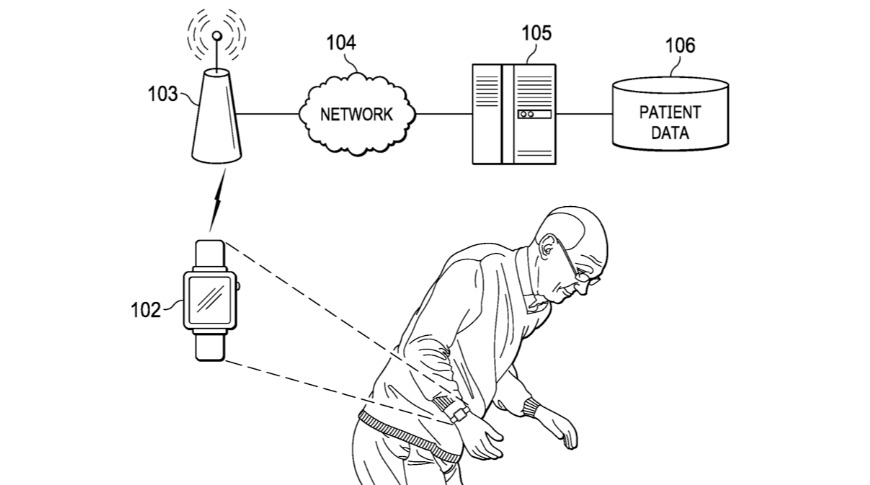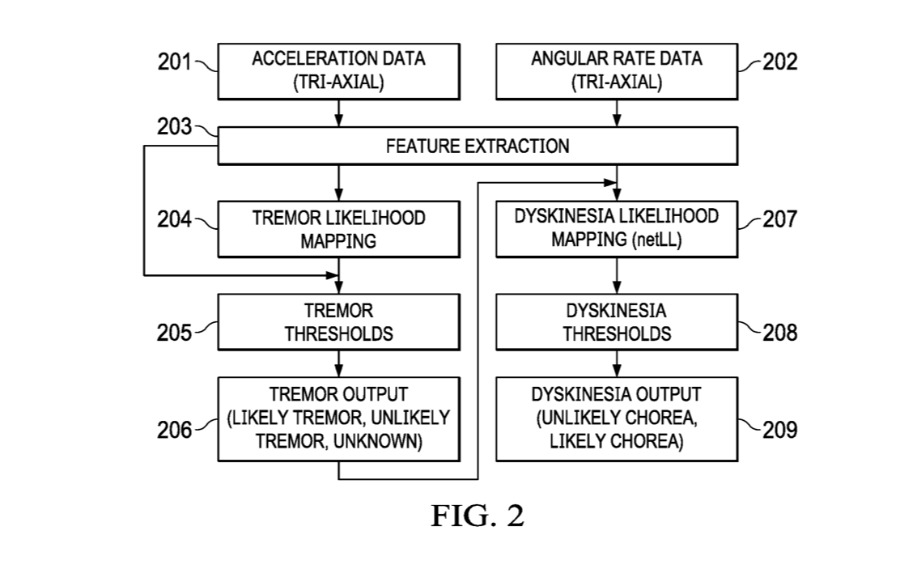Future Apple Watch may help treat Parkinson's Disease or diagnose tremor symptoms
Detail from Apple's patent regarding the detection and monitoring of tremor symptoms using Apple Watch or other devices

Apple is researching the use of new sensors in the Apple Watch to provide continuous monitoring of dyskinesia and tremors which could help clinicians treat Parkinson's Disease better.
In a new patent, US number 20190365286, Apple describes a potential new Apple Watch medical feature — and why it's needed.
"There are an estimated 600,000 to 1 million cases of Parkinson's Disease in the United States and 60,000 new cases are diagnosed each year," says Apple in the filing. "Symptoms of PD include... tremor and dyskinesia. Dyskinesia is an uncontrollable and involuntary movement that can resemble twitching, fidgeting, swaying or bobbing."
Apple's patent claims that dyskinesia and tremors tend to occur when all of the other features of Parkinson's Disease are being well managed through medication.
"Patients with PD are typically treated using dopamine (e.g., levodopa) replacement therapy to help reduce some of the symptoms of PD," it continues. "Over time, the dopamine replacement therapy becomes less effective and begins to induce more side effects, such as dyskinesia."
"A patient's quality of life is largely dependent on how precisely clinicians titrate and schedule the patient's medications to minimize the patient's symptoms. This is a challenge for clinicians because each patient has a different combination of symptoms that can change and become more severe over time. Also, in any given day the symptoms may fluctuate based on medications, food intake, sleep, stress, exercise, etc."
The system utilizes motion sensors to monitor movement and the resulting data is analysed on device using the Unified Parkinson's Disease Rating Scale (UPDRS). Apple says this provides multiple benefits and advantages, including ones for both the patient and the clinician.
"[This] provides all-day symptom/severity tracking information [and] provides a clinical tool for evaluating patient response to medication," Apple says. As well as providing this data to periodically help clinicians adjust medication, it also helps the wearer to "better plan activities around symptom patterns."
Most patients self-report their issues and clinicians work with both what they're told and a series of tests they can conduct. However, Apple says the self-reporting is unreliable, and the tests can only be done when the patient is in a clinic. Consequently, Apple proposes "passive tracking of dyskinesia and tremor symptoms using a wearable computer."
Apple describes the device as a computer and doesn't limit it to specifically the Apple Watch. The patent is illustrated with diagrams that do depict the Watch — which would be more obvious than using an iPhone, for instance.
"Passive Tracking of Dyskinesia/Tremor Symptoms," appears to be the first patent for most of the six inventors listed on it. However, one of them, William R. Powers III, is also co-inventor of a patent concerning examining data to calculate risk scenarios. Hung A. Pham has 18 patents including ones to do with pedometers, tracking body location, and heart rate monitoring.
Apple recently filed a patent regarding a potentially similar system for monitoring muscle movements using EMG sensors. This follows very many patents for Apple Watch health-related features, including ones such as non-invasive glucose monitoring for diabetics.
 William Gallagher
William Gallagher











 Wesley Hilliard
Wesley Hilliard
 Andrew Orr
Andrew Orr



 Amber Neely
Amber Neely









